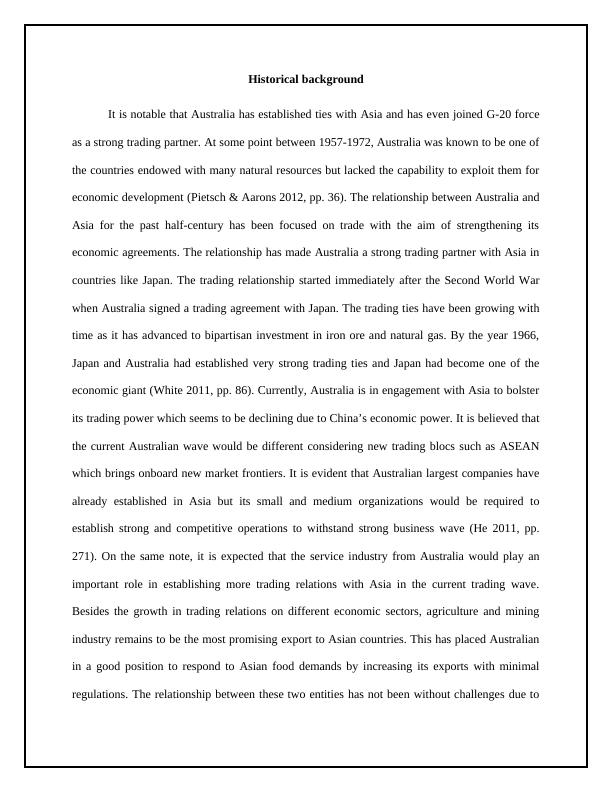Relationship between Australia and Asia
Design a website that presents a historical and contemporary understanding of Australia in relation to one of the following topics: Indigenous Australians, Asia, or Asylum Seekers.
6 Pages1252 Words67 Views
Added on 2023-03-30
About This Document
This article explores the historical background, contemporary situation, and personal reflections on the relationship between Australia and Asia. It discusses the trade ties, strategic partnerships, and efforts to strengthen economic and cultural connections. The article also highlights the challenges faced in maintaining the relationship.
Relationship between Australia and Asia
Design a website that presents a historical and contemporary understanding of Australia in relation to one of the following topics: Indigenous Australians, Asia, or Asylum Seekers.
Added on 2023-03-30
ShareRelated Documents
End of preview
Want to access all the pages? Upload your documents or become a member.
Australia's Relationship with Its Neighborhood
|6
|1354
|311
Political and Cultural Engagement between Australia and Asia
|6
|1523
|241
Free Trade Agreements - Assignment
|8
|1592
|87
Australia’s Bi-lateral relationship with China
|10
|1566
|396
Regional Comprehensive Economic Partnership (RCEP): Australia's Role and Opportunities
|8
|2828
|398
Impacts of the Chinese economy slowdown on Australia’s mining industry
|9
|1842
|304



